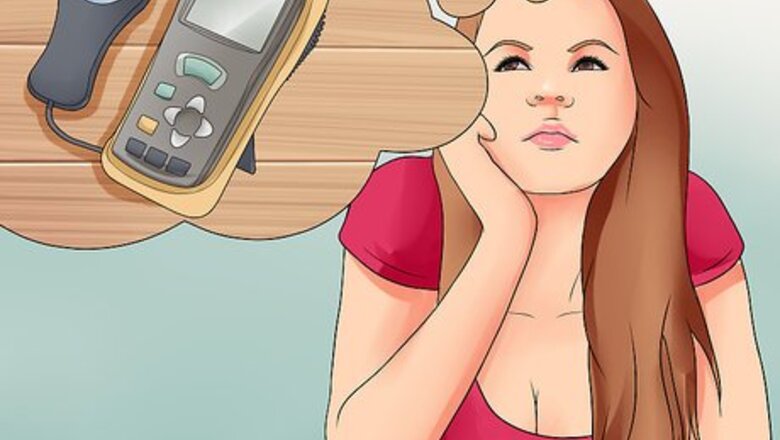
views
Measuring Light Intensity for a Room or Light Source
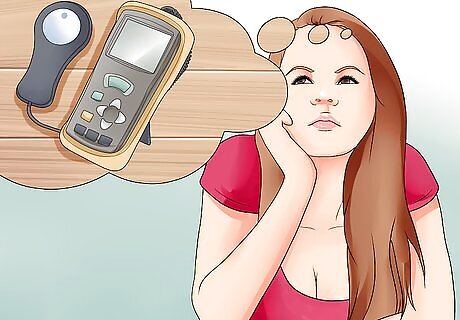
Understand photometers that measure lux and foot-candles. These are units that describe the intensity of light on a surface, or illuminance. Photometers that measure this are usually what people are looking for when they want to set up a photo shoot, or test whether a room is too bright or too dim. Some light meters are specialized for different types of lighting. For instance, one may produce more accurate results when used to measure sodium lighting. You can even purchase a "light meter" in some mobile device's app stores. Check the reviews first, as some of these apps are inaccurate. Lux is the modern accepted standard, but some devices still measure in foot-candles. Use this online calculator to convert between them.
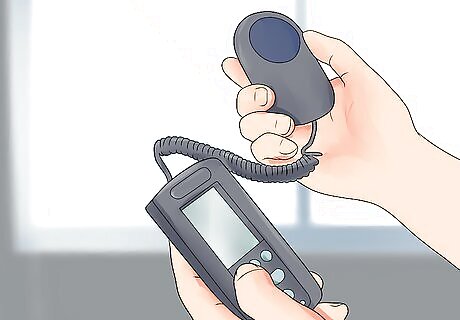
Know how to interpret illuminance units. Here are a few examples of typical illuminance measurements, to help you determine whether your lighting needs to change: Most office work is comfortably done at 250 – 500 lux (23–46 foot-candles). Supermarkets or work areas that involve drawing or other detail work are typically illuminated to 750 – 1,000 lux (70–93 foot-candles). The upper end of this range is equivalent to an indoor area next to a window on a clear, sunny day.

Understand lumens and luminance. If a light bulb or lamp label or advertisement mentions "lumens," it is describing how much total energy is emitted as visible light, a concept called luminance. Here's what you need to know: The "initial lumens" describes how much light will be given off once the light is stabilized. This takes about 100 hours of use for fluorescent and HID lights. The "mean lumens" or "rated lumens" tells you the estimated average luminance over the life span of the device. The actual luminance will be brighter than this early on, and become dimmer than this near the end of the light source's recommended lifespan. To figure out how many lumens you need, use the steps above to determine how many foot candles of illuminance you want in a room, and multiply by the square footage of the room. Aim higher than the result for rooms with dark walls, and aim lower for rooms with other major light sources.
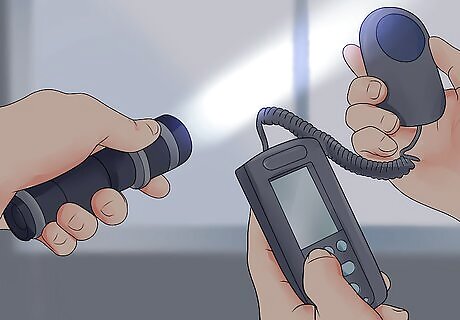
Measure beam and field angle. Flashlights and other devices that emit light in a certain direction can be described using these two additional terms. You can find these yourself using a photometer that measures lux or foot-candles, and with a straightedge and protractor: Hold the photometer directly in the path of the brightest beam. Move it around until you find the spot with the maximum intensity (illuminance). Staying the same distance from the light source, move the photometer in one direction, until the light intensity drops to 50% of the maximum level. Use a taut string or other straightedge to mark the line from the light source to this point. Walk in the other direction until you find the spot on the opposite side of the beam with 50% maximum illumination. Mark a new line from this spot. Use a protractor to measure the angle between your two lines. This is the "beam angle," and describes the angle illuminated brightly by the light source. To find the field angle, repeat these steps, but mark the two spots where the beam intensity reaches 10% of the maximum level.
Measuring Relative Intensity with a Homemade Device

Use this to compare light sources. This device is easy to construct at home, after a little shopping trip. Called a "Joly photometer" after its inventory, it can be used to measure the relative intensity of two light sources. With a little knowledge of physics, supplied below, you'll be able to discover which of your light bulbs gives off more light, as well as which are most efficient for the amount of power they use. Relative' measurements won't give you a result in terms of units. You'll know exactly how two light intensities compare, but won't be able to relate them to a third intensity without repeating the experiment.
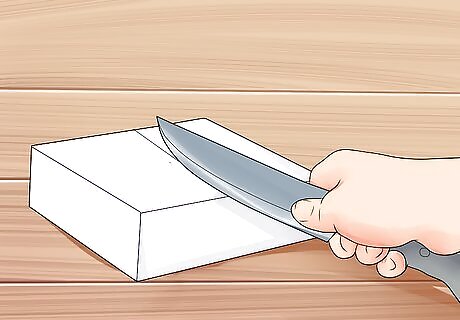
Cut a slab of paraffin wax in half. Purchase a package of paraffin wax from a hardware store or grocery store, and pull out one ¼ pound (0.55 kilogram) slab. Using a sharp knife, cut the slab into two equal pieces. Cut through the slab slowly to avoid breaking off pieces.
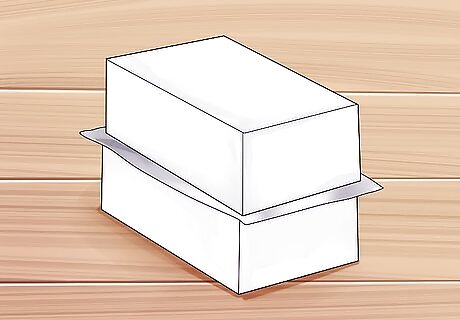
Sandwich aluminum foil between the paraffin pieces. Tear off a sheet of aluminum foil and lay it on top of one of the two paraffin pieces, completely covering the top surface. Lay the second piece of paraffin on top of the aluminum.
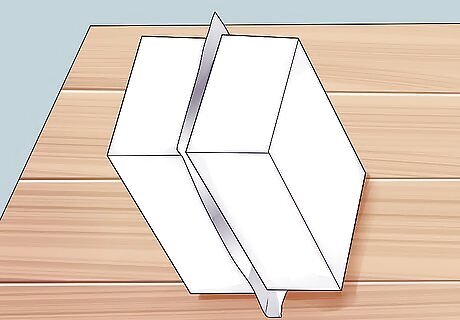
Turn the "sandwich" vertically. For this device to work, we'll need to stand it on its end, so the foil sheet in the middle is vertical. If your wax doesn't stand up on its own, you can keep it horizontal for now. Just remember that the box you'll be constructing should be designed to hold the wax in position vertically. You can use two rubber bands to hold the block together. Put one near the top of the sandwich and the other near the bottom.
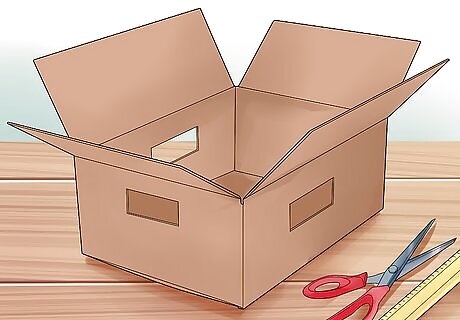
Cut three windows into a cardboard box. Choose a box just large enough to hold your wax block. The packaging that the wax was sold in often works well. Use a ruler and pair of scissors to cut three windows into the box: Cut two windows on opposite sides, exactly the same size. Each window will view a different half of the paraffin, once the block is placed inside. Cut a third window of any size in the front of the box. This should be centered, so you can view both halves of the paraffin block, on either side of the aluminum foil.
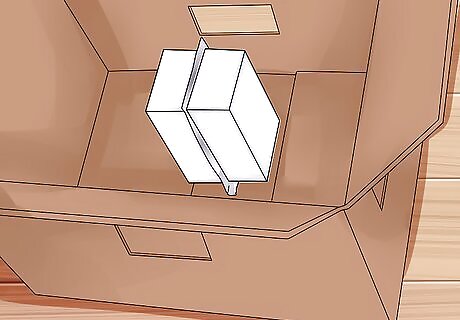
Place the paraffin inside the box. Keep the aluminum foil between the two paraffin wax blocks, in a vertical position. You may need to use tape, small pieces of cardboard, or both to keep the wax blocks upright and parallel with the opposing windowed sides, and touching the foil between them. If the box is open at the top, cover it with another piece of cardboard or other light-blocking barrier.
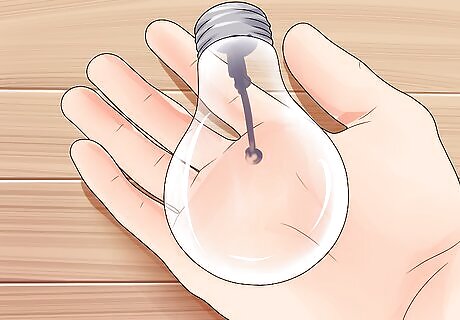
Decide on a "reference point" light source. Choose one of the light sources you'll be comparing as a "standard candle," which you'll use as a baseline for intensity. If you're comparing more than two light sources, you'll use this light source during every comparison.
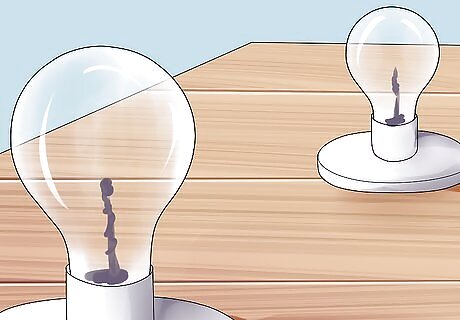
Arrange two light sources in a straight line. Place two light bulbs, LEDs, or other light sources on a flat surface in a straight line. The distance between them should be significantly larger than the width of the box you made.
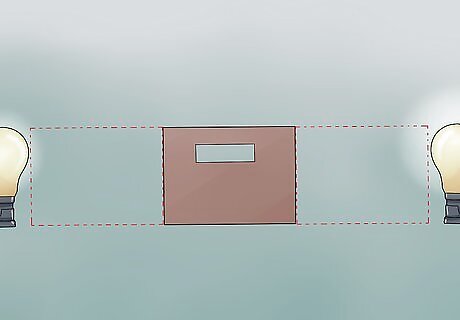
Place the photometer between the light sources. The photometer should be at the exact same height as the light sources, so that the lights completely illuminate the wax blocks through the side windows. Remember, the light sources should be a fair distance away, to allow even illumination.
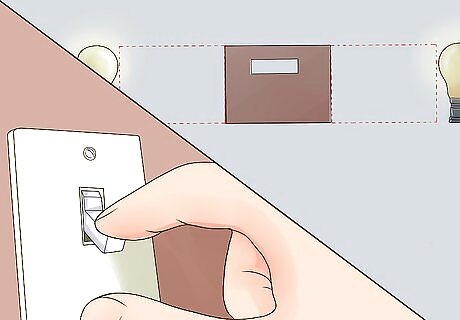
Turn off all other lights in the room. Close any window, shades, or blinds so that only light from the test light sources is hitting the blocks.
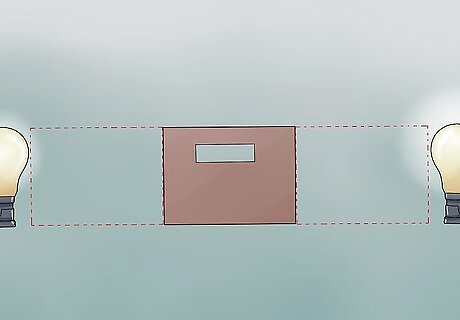
Adjust the box until both wax blocks are equally bright. Move the photometer toward the side with the dimmer wax. Watch through the front window as you adjust the position of the box, and stop when both wax blocks appear equally bright.
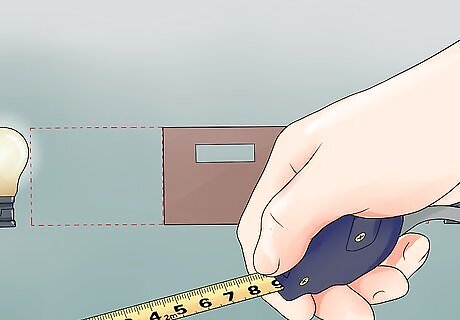
Measure the distance between the photometer and each light source. Use measuring tape to measure the distance from the aluminum foil to your chosen "reference point" light source. We'll call this d1. Write this down, then measure the distance from the aluminum foil to the light source on the opposite side, d2. You can measure the distance using any unit, but make sure not to mix them. For example, if your measurement is in feet and inches, convert the result to use inches only.

Understand the physics involved. The brightness of the blocks decreases with the square of the distance, because we're measuring the amount of light that falls onto a two dimensional area, but the light is radiating through three dimensional volume. In other words, when a light source moves twice as far away (x2), the light it produces is spread out across four times the area (x2). We can write the brightness as "I / d I is the intensity and d is the distance, just like we used them in previous steps, Technically, what we described as brightness is referred to as illuminance in this context.

Use this knowledge to solve for the relative intensity. When both blocks appear equally bright, their "illuminance" is equal. We can write this as a formula, then rearrange it to solve for I2, or the relative intensity of the second light source: I1/d1 = I2/d2 I2 = I1(d2/d1) Since we're only measuring the relative intensity, or how they compare, we can just say I1 = 1. This will make our formula simple: I2 = d2/d1 For example, let's say the distance d1 to our reference point light source is 2 feet (0.6 meters), and that the distance d2 to our second light source is 5 feet (1.5 meters): I2 = 5/2 = 25/4 = 6.25 The second light source has an intensity 6.25 times greater than the first light source.
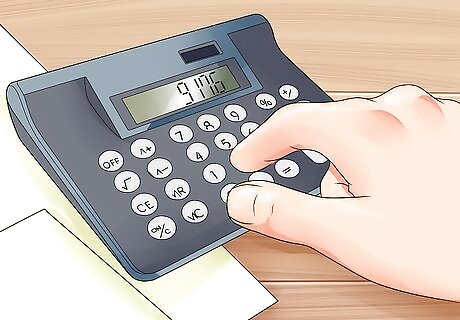
Calculate the efficiency. If you are using light bulbs with a wattage marked on them, such as "60W" for "60 watts," that's how much electrical power the light bulb uses. Divide the relative intensity of the bulb by this power to find out how efficient the bulb is, relative to your other light sources. For example: A 60 watt bulb with a relative intensity of 6 has a relative efficiency of 6/60 = 0.1. A 40 watt bulb with a relative intensity of 1 has a relative efficiency of 1/40 = 0.025. Since 0.1 / 0.025 = 4, the 60W bulb is four times as efficient at turning electrical power into light. Note that it will still use more power than the 40W bulb, and thus cost you more money; efficiency just tells you how much "bang for your buck" you get.


















Comments
0 comment